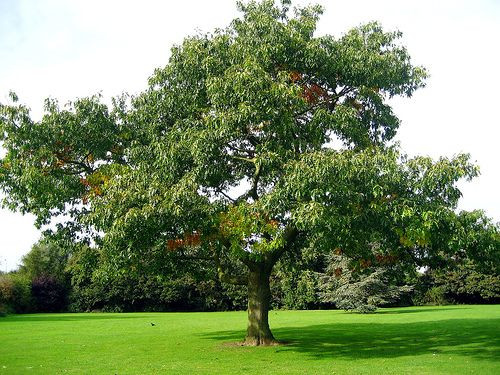Healthy Neighborhood Trees Lower Risk of Heart, Respiratory Illnesses

Despite the lengths humans can go toward avoiding the environment, trees - and the natural environment - has long been linked to decreased stress, increased physical activity and overall better health. One famous 1984 study found that something as simple as having a view outdoors could improve patients' chances of recovering after surgery.
A recent study conducted by researchers at the United States Department of Agriculture, the National Institute of Standards and Technology in Maryland and Drexel University in Pennsylvania has found that the benefits of trees extend far beyond the hospital and far earlier than surgery. In fact, the study suggests that the health of trees in your neighborhood can affect your risk for developing cardiovascular and respiratory illnesses.
The study focused on the emerald ash borer, a beetle that kills all 22 species of ash trees and essentially all trees that it infects. Discovered in 2012, it is estimated that the beetle has killed 100 million trees - a significant number but a potentially even greater problem when one considers that there are 7.5 billion ash trees in the United States. The study examined rates of cardiovascular and respiratory illnesses in counties with at least one confirmed case of the emerald ash borer. Cardiovascular and respiratory illnesses were selected for study particularly because they are the first and third greatest causes of death in the United States. The study also looked at rates of death among residents who lived in neighborhoods of ash tree infestation.
The study found that, in counties with borer infestation, there were about 6,000 more deaths from respiratory illnesses and about 15,000 more deaths from cardiovascular illnesses. This effect was particularly pronounced in wealthier neighborhoods. Researchers suggest that there are several explanations for this phenomenon, writing, "People in wealthier counties may have greater access to ash trees, so the death of these trees has a greater impact on them. In particular, urban areas within wealthier counties may have more trees, or better maintain them." They also note that parks in poorer neighborhoods may have greater rates of crime, so residents in those neighborhoods may derive less of a benefit from them.
"There's a natural tendency to see our findings and conclude that, surely, the higher mortality rates are because of some confounding variable, like income or education, and not the loss of trees," study author Geoffrey Donovan said in a statement. "But we saw the same pattern repeated over and over in counties with very different demographic makeups."
The study was published in the American Journal of Preventative Medicine.



























